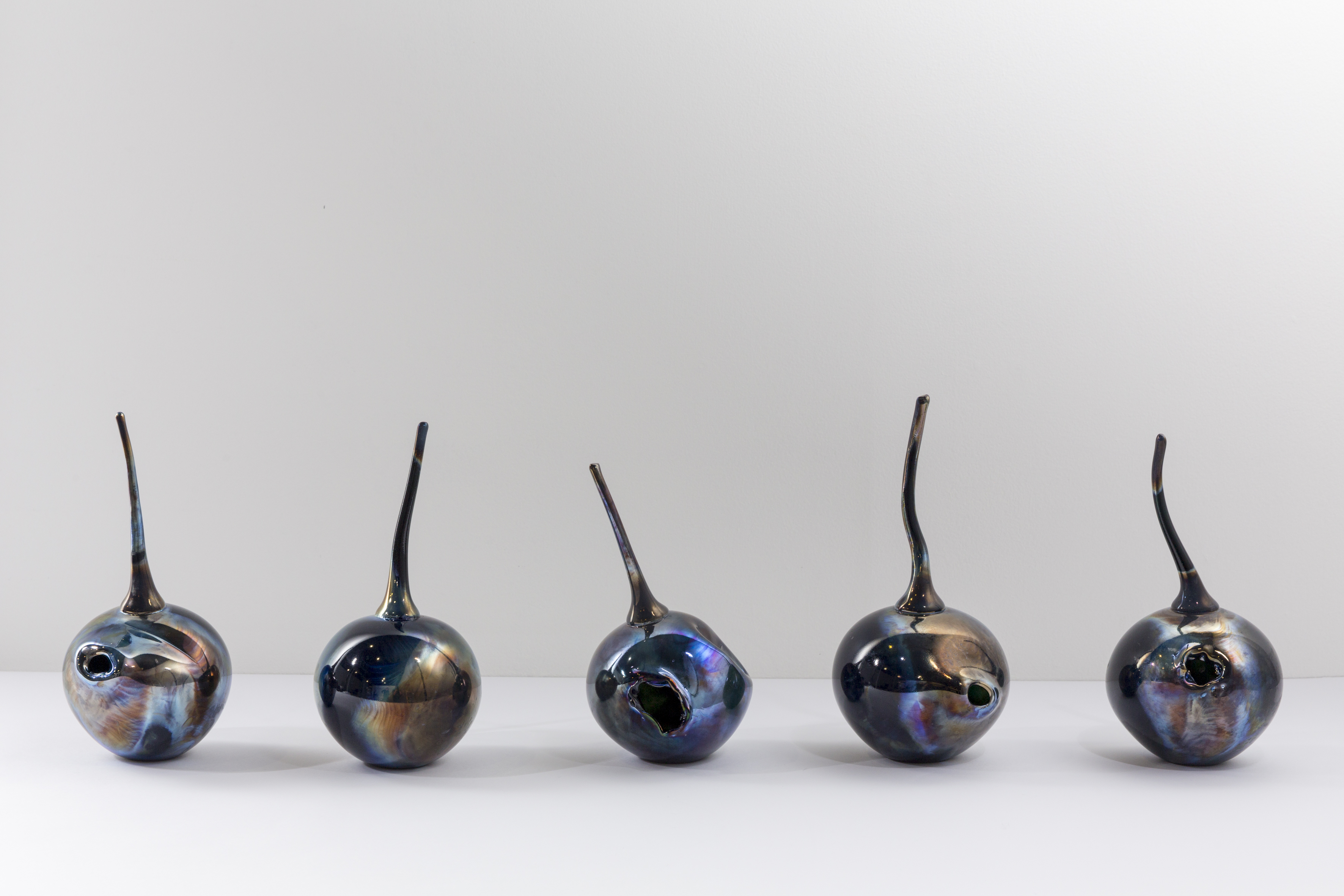Audio descriptions: Artworks in the exhibition Looking Glass: Judy Watson and Yhonnie Scarce

Yhonnie SCARCE Only a mother could love them 2016, hand blown glass, 25 x 15cm diameter each (variable sizes - approx.). Monash University Collection. Purchased by the Monash Business School 2017. Courtesy of Monash University Museum of Art. Courtesy of the artist and THIS IS NO FANTASY, Melbourne.
Only a mother could love them by Yhonnie Scarce, 2016.
Listeners are advised that this audio description includes sensitive content about infant deaths.
Five hand blown glass objects are placed in a row within a clear acrylic display case that sits on a white base about a metre off the floor. The display case is about 2 metres long, 40 centimetres deep and 40 centimetres high. The glass objects in the display case are shaped like bush plums, which are similar in shape to plums found in most Australian supermarkets. The glass bush plums have a diameter of 15 centimetres and their stalks extend upwards, giving the objects an overall height of 25 centimetres. They are placed about 25 centimetres apart within the cabinet.
The rounded glass surfaces of these bush plums are very dark and reflective. Like an oil slick, they reflect different colours—vivid blue, orange and purple—when viewed at different angles. The colour variations pool and marble on the objects’ rounded glass surfaces. Speaking about the colour of this artwork, the artist has said, “I wanted the colours of the darkness—black lustre—you flame it—it's like bruising…”
While the bush plums are roughly similar in size and shape, they have inconsistencies and deformities. Some have holes burnt into their skins, while others have indentations, as if they have been partly crushed.
Scarce belongs to the Kokatha people from central South Australia and the Nukunu people from the lower part of the Flinders Ranges, near Port Augusta and Port Germein in South Australia. She was born in 1973 in Woomera in South Australia, about 600 kilometres from Maralinga, where the British military carried out nuclear testing in the 1950s and 1960s. Speaking about the nuclear testing, the artist explains:
“Dust and clouds travelled from the site across the state making many people sick, and the infant death rate was high during and after those tests. Recently I’ve made work that references these events, which I felt were not being talked about.”
Children born with physical disabilities and bodily deformities were also common following the fallout from the tests. Scarce’s works often take the form of native foods as metaphors for bodies. She explains: “I chose the bush plum because of their embryonic state, like the moment the sperm enters the egg, the initial beginning of life, but these kids didn't get that chance, hence dysmorphia.”
In an interview with the exhibition’s curator, Hetti Perkins, the artist states, “There’s not enough documentation related to Aboriginal deaths during those nuclear tests, but there’s definite written documentation on stillborn babies and babies born with deformities in the area that’s still being uncovered.” Scarce’s work often references the ongoing effects of colonisation on Aboriginal people, and questions why Australia doesn’t have memorials recognising the massacres of Aboriginal people, as other countries have memorials honouring victims of genocide.

